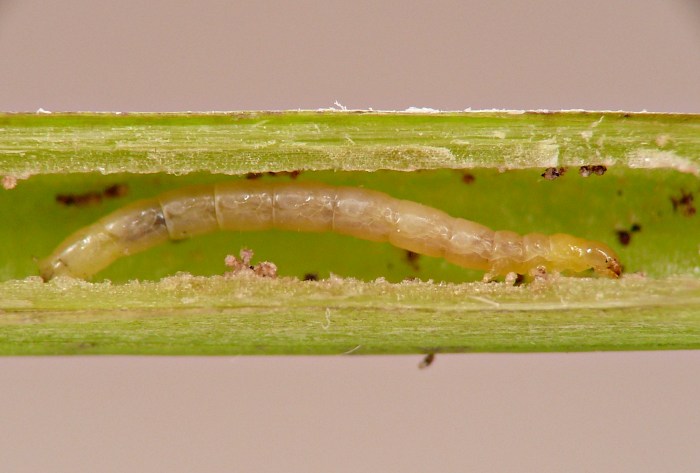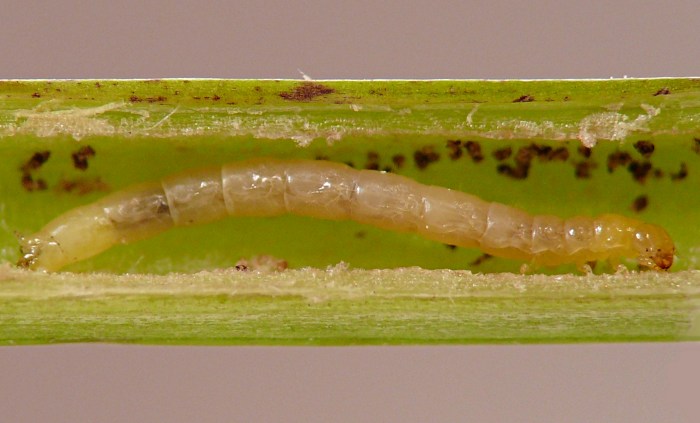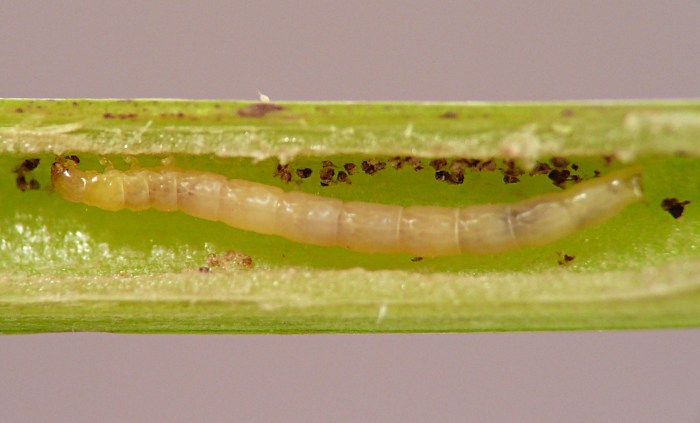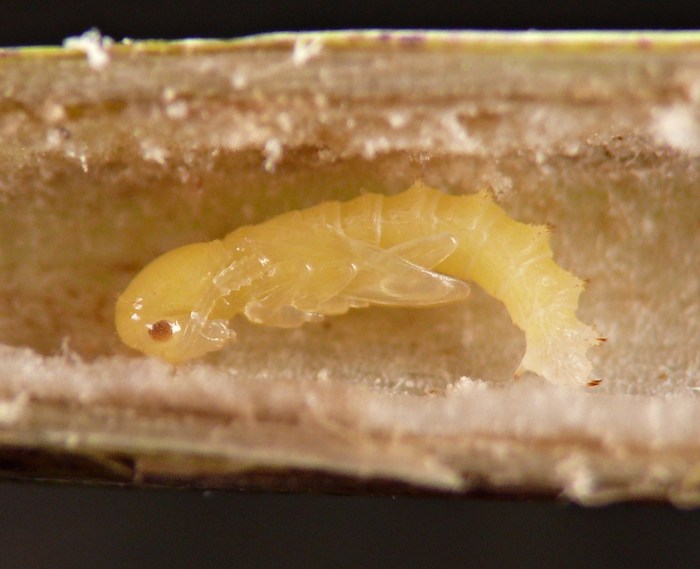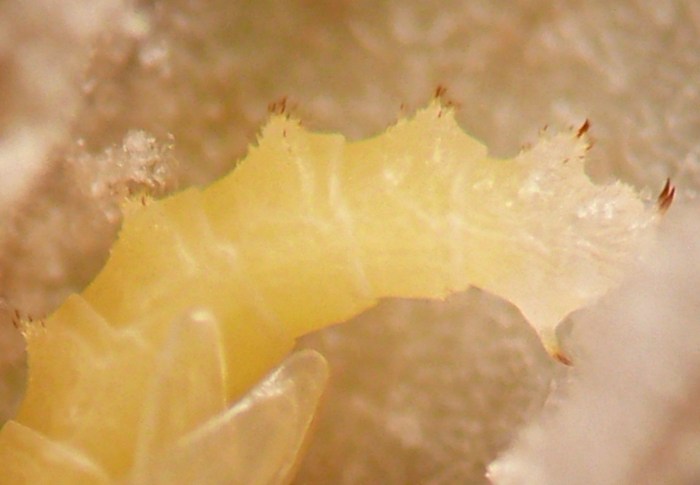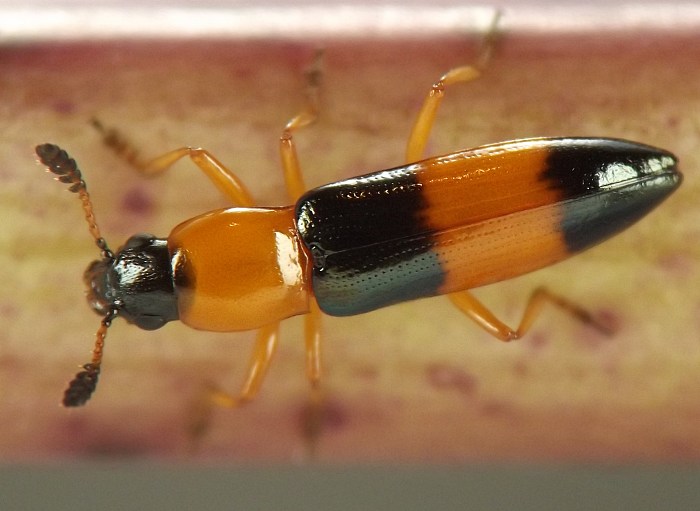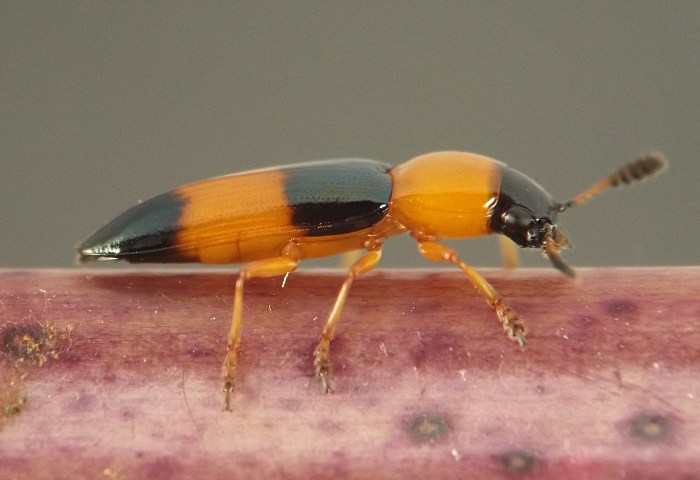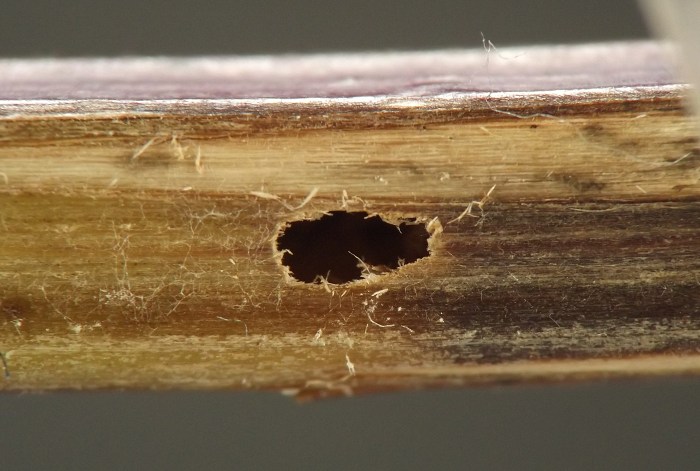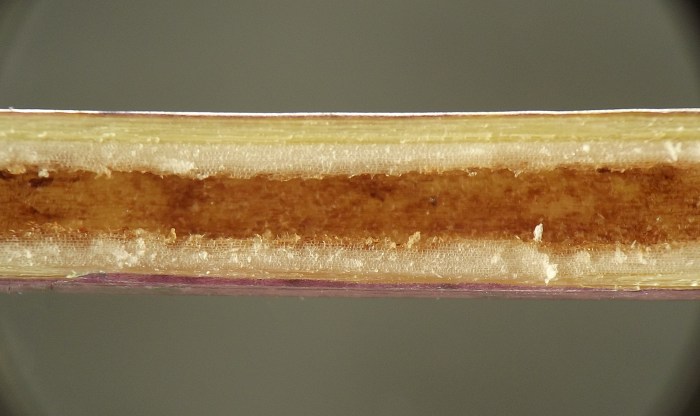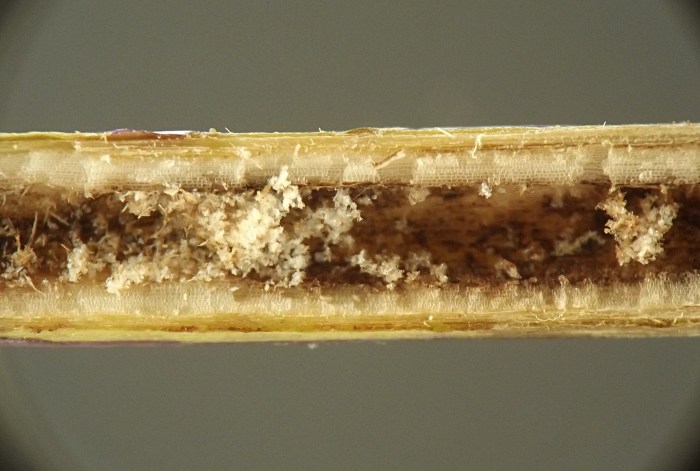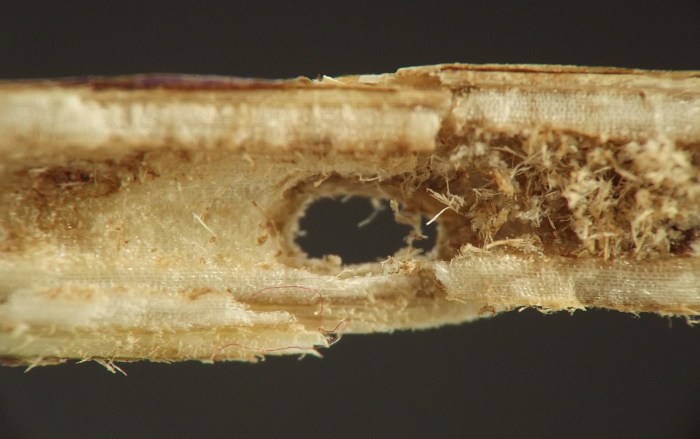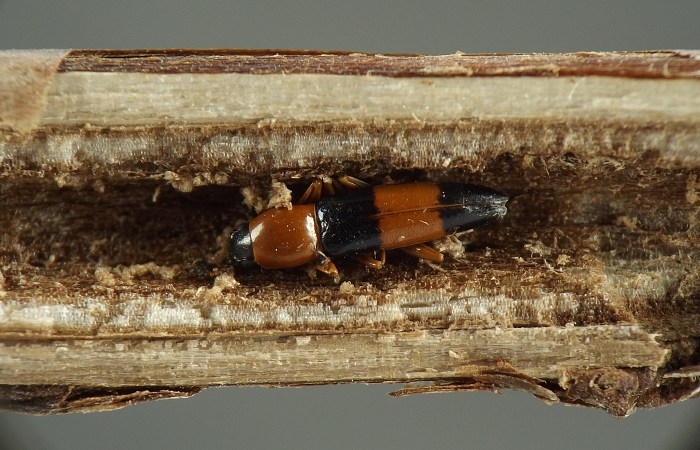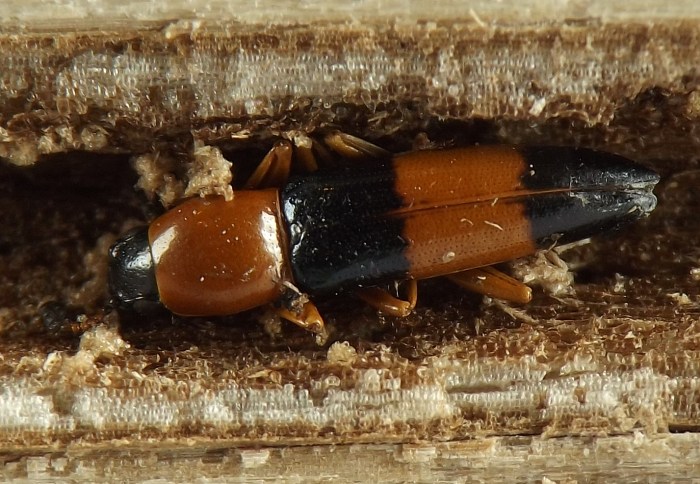Stem borer (Coleoptera: Erotylidae) in Monarda [0338]
| Order | Coleoptera |
|---|---|
| Family | Erotylidae[T,E?,L,A] |
| Lower taxon | cf. Languria trifasciata |
| No. spp. involved | One confirmed |
| Feeding mode | Stem borer |
| Host plant | Bee balm / wild bergamot, Monarda fistulosa (Lamiaceae) |
Tunnels in stems of the host. Because stems of the host are at least partially hollow, much of the larva's feeding involves excavating the layer of pith lining the inner walls of the stem. Two larvae collected from late June to mid-July emerged as adults at the end of July. Both larvae were yellowish in color, not orange like most larvae of a more common species of lizard beetle (Acropteroxys gracilis) encountered in the current study; the pupa was also yellow. Additionally, a deceased adult was located in a tunneled stem of the host in winter, after the stem had long since senesced. The adults appear externally similar to Languria trifasciata, based on images of that species at BugGuide.net (VanDyk 2024d).
An egg found in the stem of a spring shoot is hypothesized but not confirmed to belong to this species, based on similarities with erotylid oviposition observed in an unrelated host (J. van der Linden, unpublished data; also note Tangren & Frye 2020). The egg record, though uncertain, is included on this page in the images below for the sake of completeness. Given the fact that L. trifasciata has been reported from the Northeast and Midwest at least as early as mid- to late April (Carr & Alexander 2013, Moorehouse & Hedlund 2022), it does not seem unreasonable to suppose that at least some adults could lay eggs in spring shoots of their host plants.
L. trifasciata has been previously reported as a stem borer in Lactuca canadensis (Chittenden 1904).
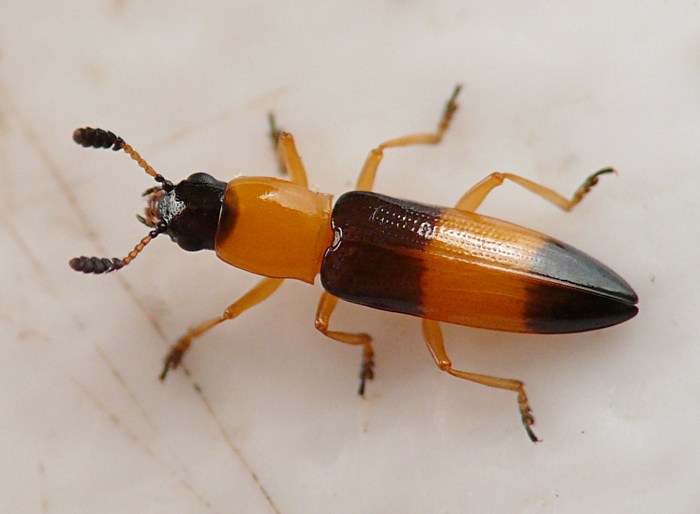
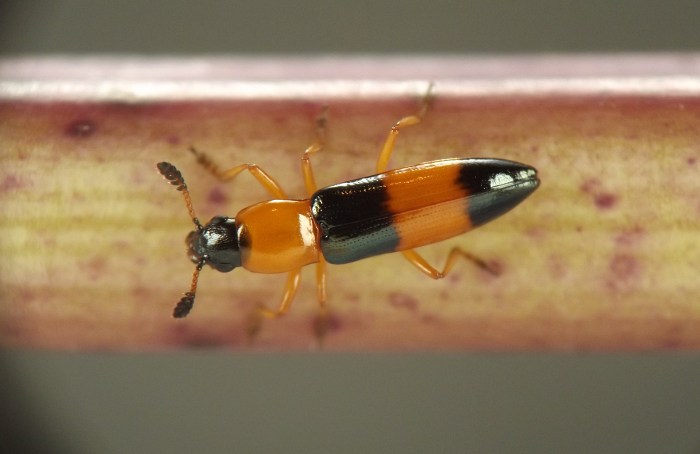
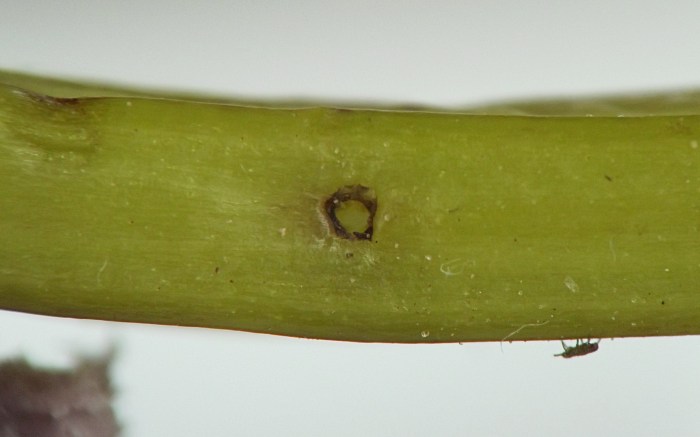
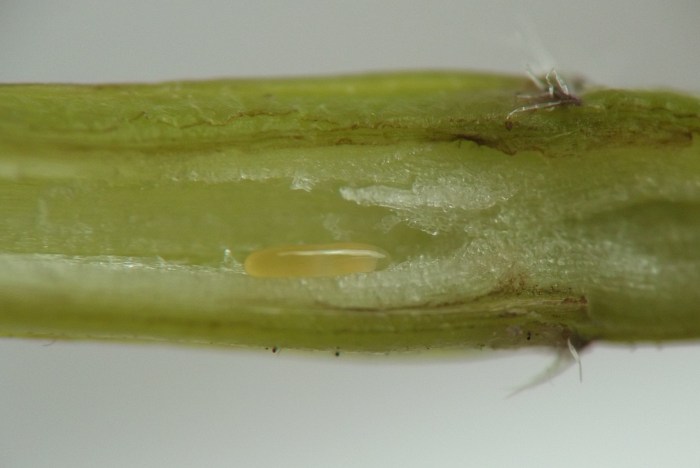
References
Carr, J.F. and Y. Alexander. 2013. What's red and black and eats pollen? - Languria trifasciata. Contributor post on BugGuide.net. Retrieved November 6, 2023 from https://bugguide.net/node/view/763617.
Chittenden, F.H. 1904. Biologic notes on species of Languria. Journal of the New York Entomological Society 12:27-30.
Moorehouse, A. and T. Hedlund. 2022. Languria trifasciata lizard beetle - Languria trifasciata. Contributor post on BugGuide.net. Retrieved November 6, 2023 from https://bugguide.net/node/view/2108993.
Tangren, S.A. and C.T. Frye. 2020. Clover stem borer infestation in sundial lupine: recognition and consequences. Natural Areas Journal 40(2):121–128.
VanDyk, J., ed. 2024d. Species Languria trifasciata. Species page at BugGuide.net. Retrieved July 21, 2024 from https://bugguide.net/node/view/397212/bgimage.
Page created 11/05/23. Last update: 09/09/24
